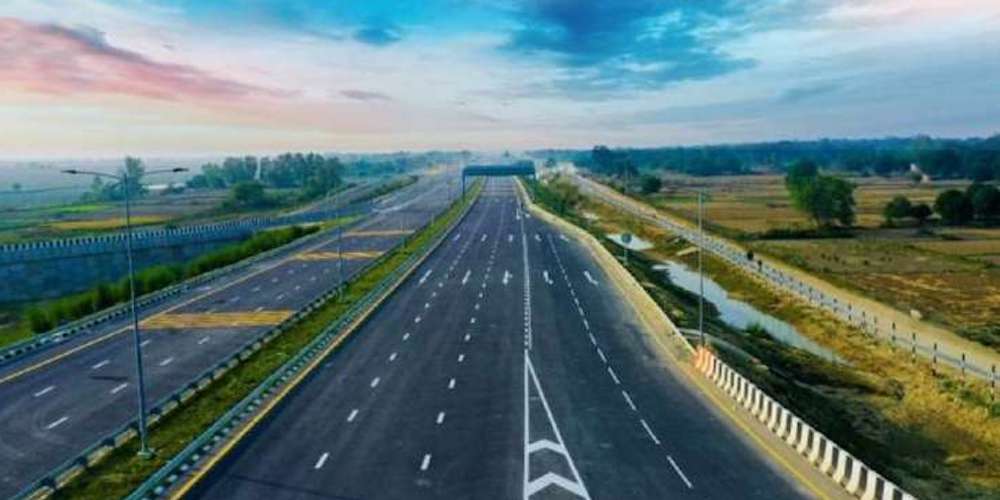PM Gatishakti National Master Plan

Few will contest the point made by Prime Minister Narendra Modi the other day that for India becoming a developed country by 2047, the infrastructure development in the country must be the driving force of the economy.
As the Prime Minister said, Infrastructure has always been important in the development of any country, in sustainable development, keeping in mind its bright future. Those who study the history related to infrastructure know this very well. Like Chandragupta Maurya had got the Uttarapatha built about 2500 years ago. This route greatly helped in increasing the trade-business between Central Asia and the Indian subcontinent. Later, Emperor Ashoka also commissioned several development works on this route. In the 16th century, Sher Shah Suri had also understood the importance of this route and completed the development works in a fresh way. When the Britishers came, they upgraded this route further and it was called GT Road. That is, the concept of development of highways for the development of the country is thousands of years old. Similarly, we see that nowadays people talk a lot about river fronts and waterways. In this context, if we look at the Ghats of Banaras, they are also river fronts built thousands of years ago. Due to the direct water connectivity with Kolkata, Banaras was also the centre of trade and business for many centuries.
Another interesting example is the Kallanai Dam in Thanjavur, Tamil Nadu. This Kallanai Dam was built during the rule of the Chola Empire. This dam is about 2000 years old and the people around the world will be surprised to know that this dam is still operational today. This dam built 2000 years ago is still bringing prosperity in this area. You can imagine what India’s heritage has been, what expertise it has had, what capability it has had.
Unfortunately, after independence, modern infrastructure was not given as much emphasis as it should have been. Prime Minister Modi rightly pointed out how for decades, a thinking dominated in our country that poverty is a virtue. This thinking prevented previous governments from investing in the country’s infrastructure. It was not conducive to their vote bank politics. Seen this way, the present government has not only pulled the country out of this thinking, but is also making record investments on modern infrastructure.
Today, the average annual construction of National Highways has almost doubled as compared to pre-2014 era. Similarly, before 2014, every year 600 route kilometre rail lines were electrified. Today it is reaching about 4000 route kilometers. If we look at the airports, the number of airports has also increased from 74 in 2014 to around 150. That is, it has doubled. That is, 150 airports have been completed in such a short span of time. Similarly, in today’s era of globalization, the sea-port is also very crucial. The capacity augmentation of our ports has also almost doubled as compared to before.
PM Gati Shakti National Master Plan is going to revive India’s Infrastructure, India’s Multimodal Logistics. In a way, this is a great tool to integrate economic and infrastructure planning as well as development. Try to recall, one of our greatest problems was the fact that whenever ports and airports used to be built, the first mile and last mile connectivity was not taken care of and was not given priority. SEZs and industrial townships used to come up, but there was a lot of delay in proper connectivity and getting access to infrastructure like electricity, water and gas pipelines.
Consequently, there were several problems related to logistics. A large part of the country’s GDP was getting drained unnecessarily. And every type of development project used to get stalled in a way. Now all these nodes are being tied together with a fixed time limit. A kind of blueprint is being prepared by involving everyone. The results of PM Gati Shakti National Master Plan are also visible today.
According to Prime Minister Modi, the government has identified those gaps, which affect our logistic efficiency. Priority has been given to 100 critical projects in this year’s budget and a provision of Rs 75,000 crore has been made for them. With quality and multi-modal infrastructure, our logistic cost is going to reduce further in the days to come. This has to have a very positive impact on the goods made in India, on the competence of our products. Besides the logistics sector, there will be a lot of improvement in ease of living and ease of doing business. Under such a scenario, the possibilities for the participation of the private sector are also increasing continuously. I invite the private sector to participate in these projects.
Another important point underscored by the Prime Minister is the need of having different types of materials for the construction of modern infrastructure. That is, it creates huge possibilities for our manufacturing industry. If this sector assesses its needs and forecasts in advance, if a mechanism is developed for this, then the construction industry will be easily able to mobilize materials. “We need an integrated approach; we have to integrate the circular economy part with our future construction works. The concept of ‘best out of waste’ should also be a part of it. And I believe that the PM Gati-Shakti National Master Plan also plays a major role in it”, the Prime Minister said. And he is right.



